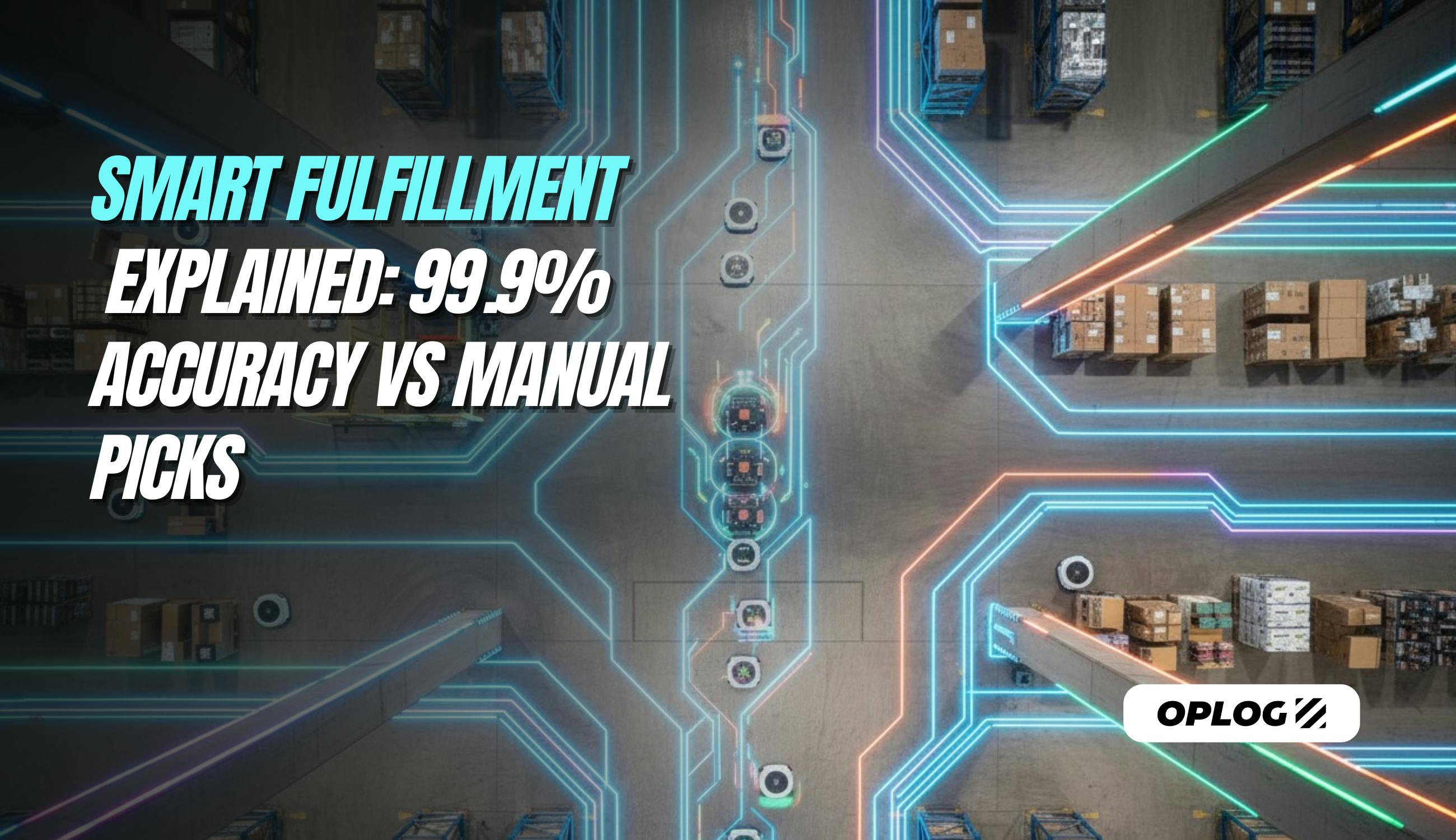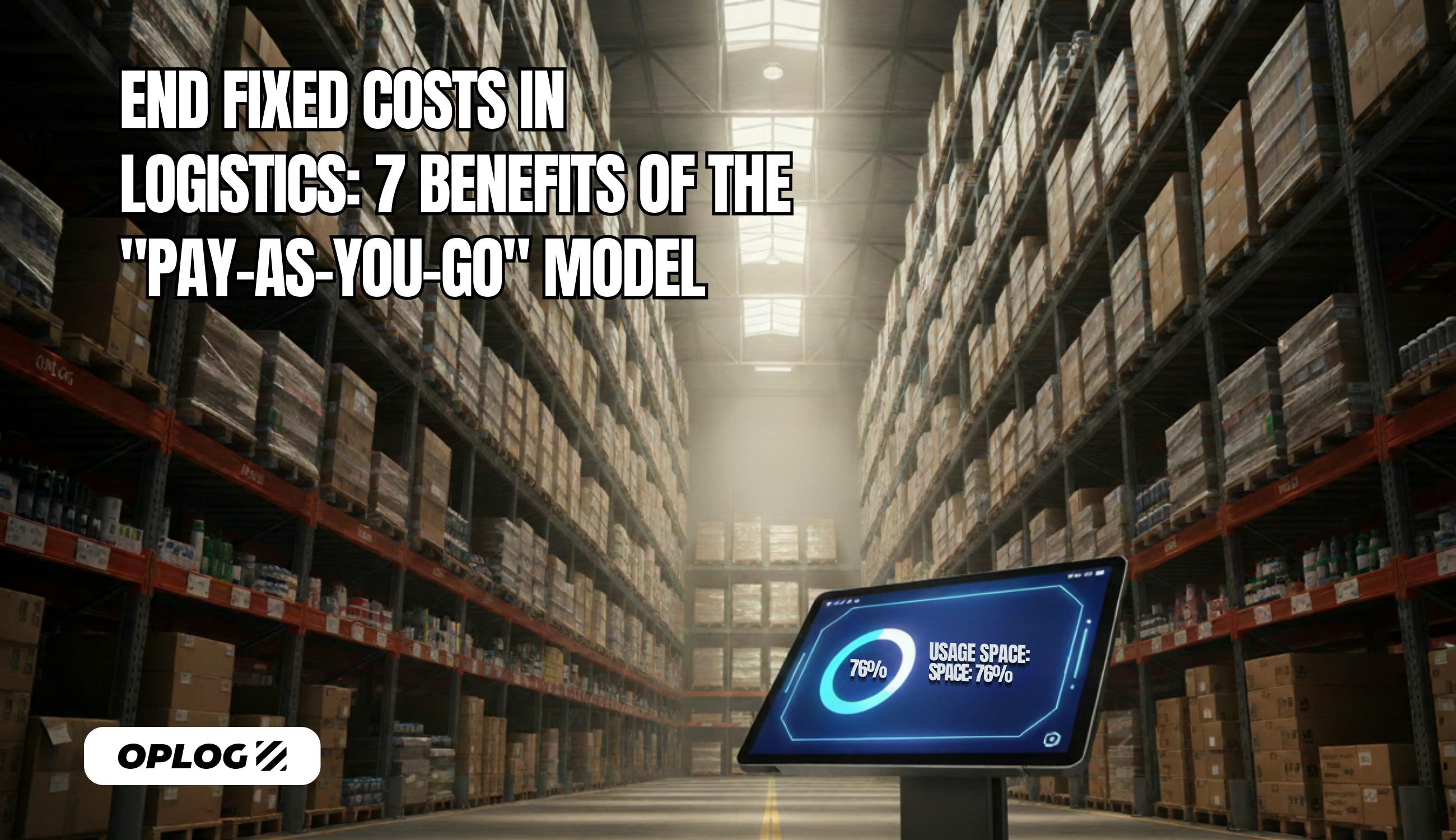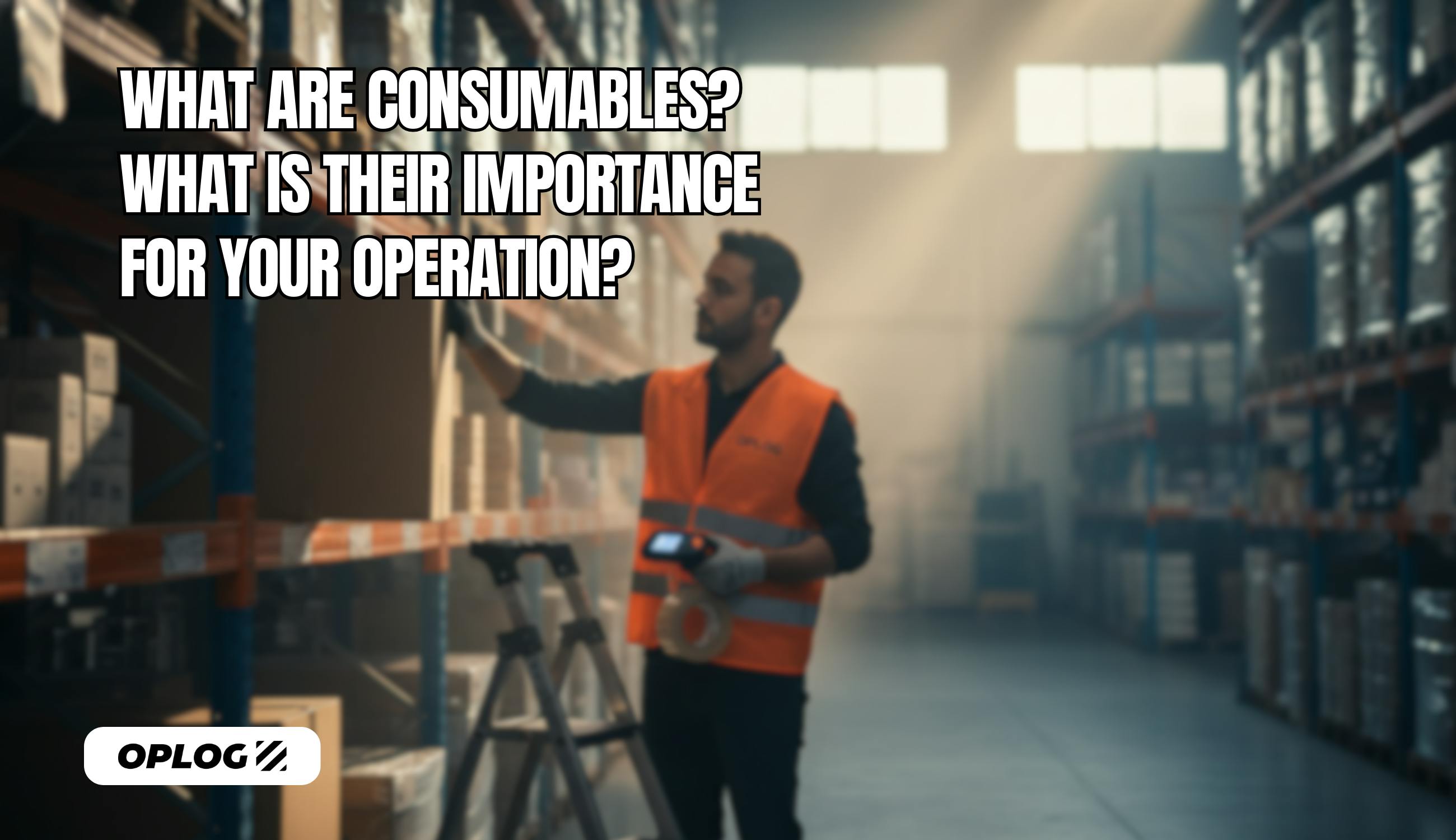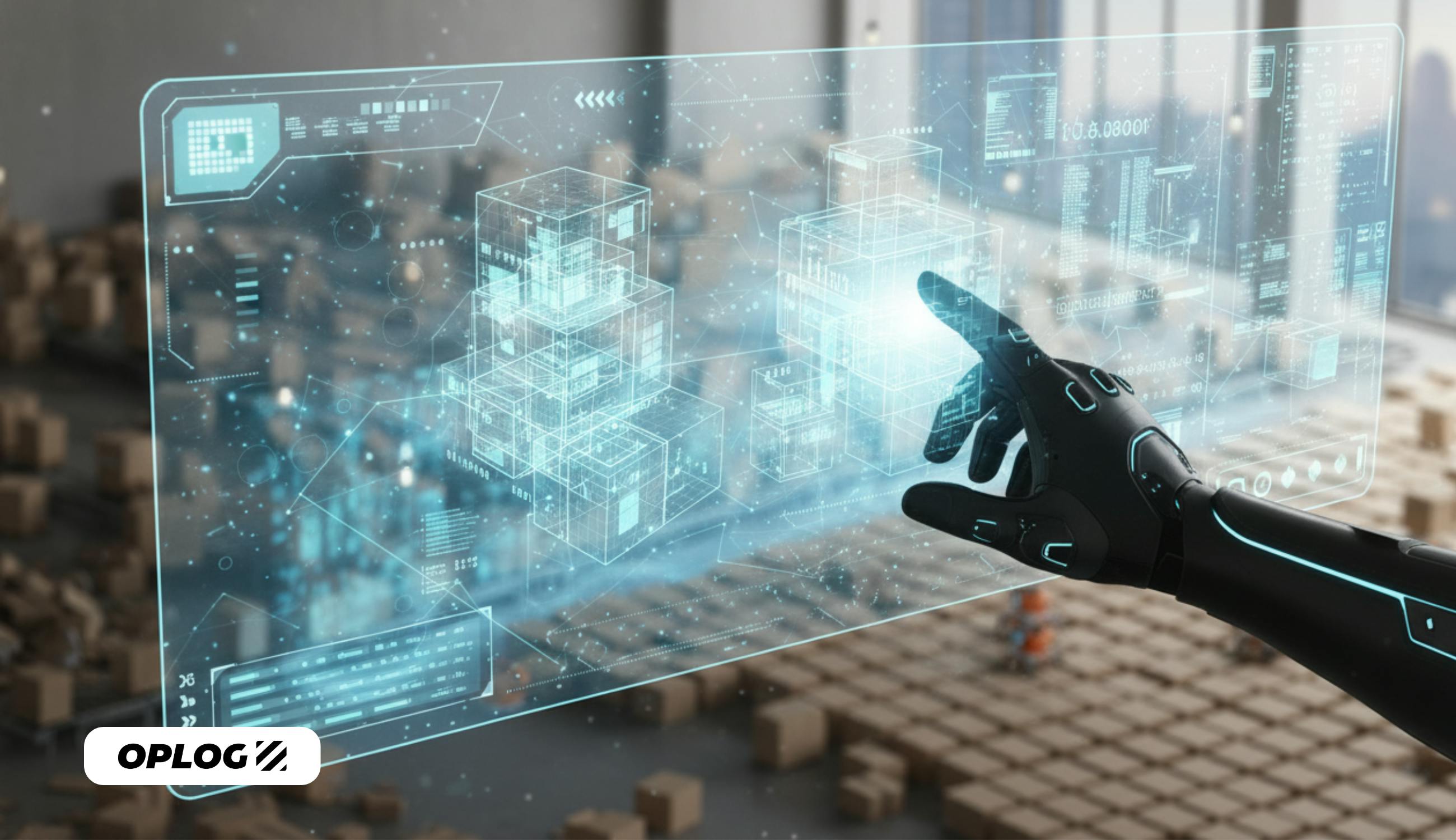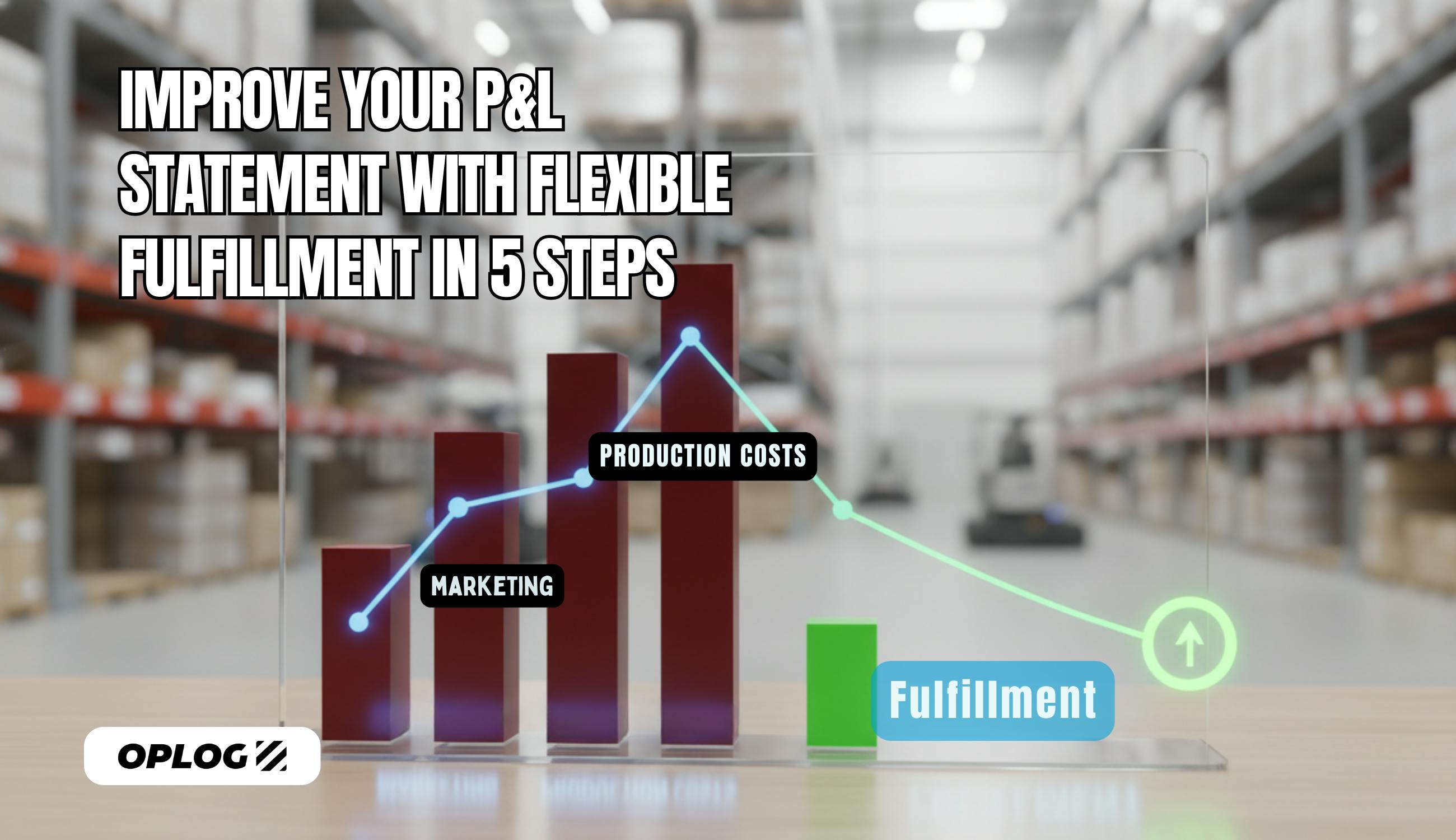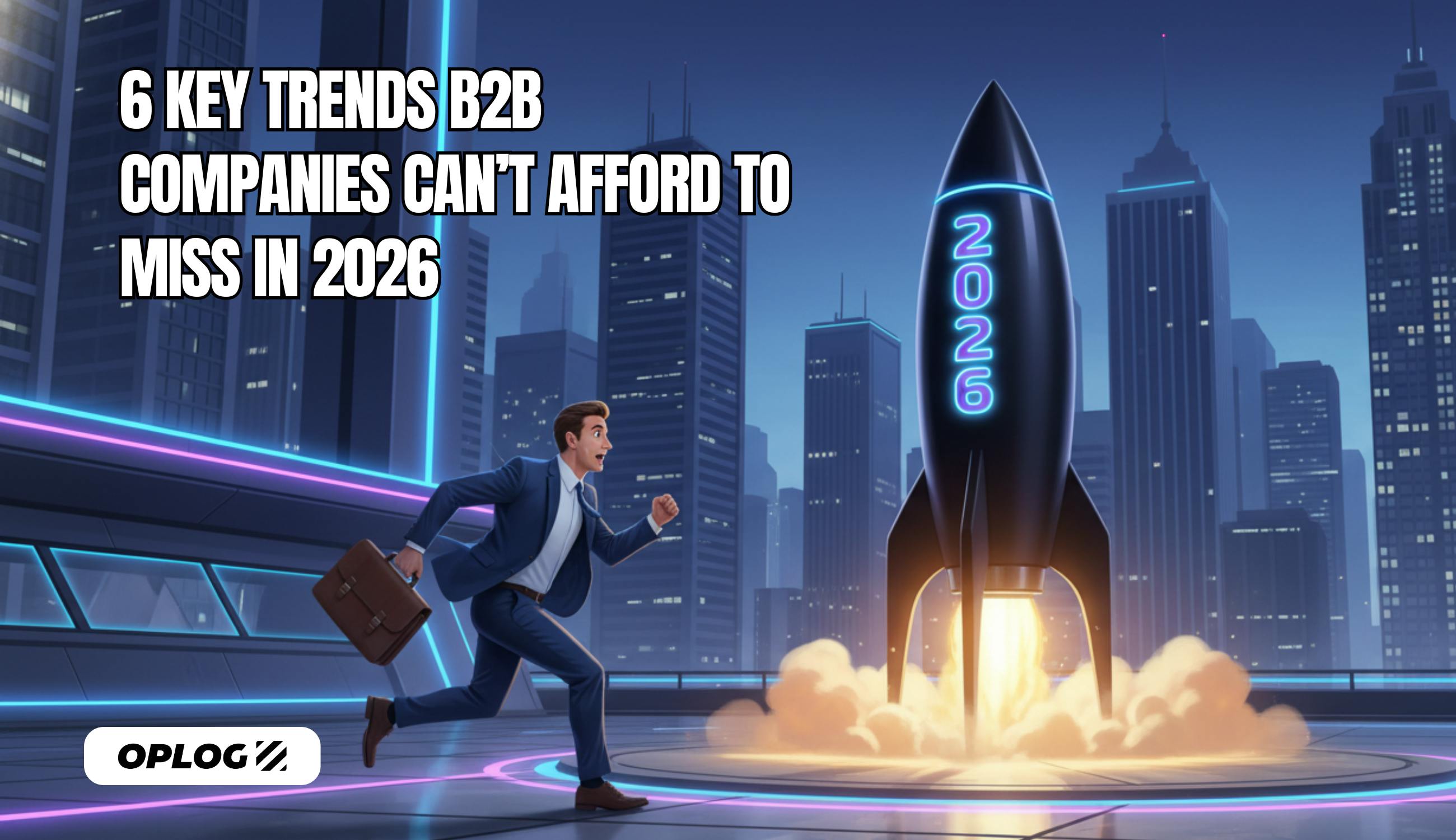Table of Contents
- What is Smart Fulfillment?
- What is Traditional Fulfillment?
- Smart vs. Traditional Fulfillment: Key Differences
- Technologies Powering Smart Fulfillment
- How to Choose a Smart Fulfillment Partner
- Case Study: WooHooBox's Transformation
- Frequently Asked Questions
- Conclusion
What is Smart Fulfillment?
The global e-commerce fulfillment services market is experiencing unprecedented growth, valued at $89.96 billion in 2023 and projected to reach $168.72 billion by 2028, growing at a CAGR of 13.40%. This explosive growth is driven by a fundamental shift from traditional warehouse fulfillment to smart fulfillment - an intelligent, technology-driven approach that's revolutionizing how online orders are processed and delivered.
Smart fulfillment represents the convergence of artificial intelligence, robotics, and data analytics in modern 3PL operations. Unlike conventional pick and pack services, smart fulfillment leverages advanced technologies to create self-optimizing fulfillment centers that learn and improve with every transaction. At its core, smart fulfillment integrates AI-powered robotics systems like our TARQAN with comprehensive management solutions like OPLOG ONE, creating an ecosystem where machines and humans collaborate seamlessly.
The business impact of smart fulfillment is transformative. According to McKinsey's research on automation in logistics, companies implementing smart automation technologies in their warehouses report up to 25-30% improvement in productivity and 20-50% reduction in operational costs. For e-commerce businesses, this translates into achieving 99.9% order accuracy rates - a dramatic improvement from the industry standard of 95-97% in traditional operations. Smart fulfillment centers can process orders 40% faster than manual operations, enabling same-day delivery capabilities that modern consumers increasingly demand.
What truly distinguishes smart fulfillment is its ability to scale dynamically. During peak seasons like Black Friday or holiday shopping periods, when order volumes can spike by 300-500%, smart fulfillment systems automatically adjust resource allocation, ensuring consistent service levels without the need for temporary staff or overtime costs that plague traditional operations.
What is Traditional Fulfillment?
Traditional warehouse fulfillment has been the backbone of e-commerce logistics for decades, relying primarily on manual processes and human labor. As reported, approximately 80% of warehouses globally still operate without any automation, depending entirely on manual operations and paper-based systems.
In traditional fulfillment centers, workers navigate warehouse aisles with printed pick lists or basic handheld scanners, manually locating and retrieving items. This approach, while familiar and requiring lower initial investment, comes with significant limitations. One report indicates that manual picking accounts for up to 55% of warehouse operating costs and is responsible for approximately 80% of fulfillment errors.
Traditional 3PL providers typically operate on rigid contract structures, requiring 1-3 year commitments with substantial minimum monthly volumes. Approximately over 65% of traditional 3PL contracts include fixed monthly minimums ranging from $5,000 to $50,000, regardless of actual usage. This model creates significant financial burden for growing e-commerce businesses, especially during seasonal fluctuations when order volumes can vary by 200-300%.
The technology infrastructure in traditional fulfillment is often fragmented. One study found that 27% of warehouses still rely on pen and paper for inventory management, while another 45% use basic spreadsheets or outdated warehouse management systems with limited integration capabilities. This technological gap results in inventory accuracy rates hovering around 63%, far below the 99.5% accuracy achieved by modern smart fulfillment systems.
Common challenges in traditional pick and pack services include limited real-time visibility, with most systems providing batch updates only once or twice daily. This delay in information flow makes it nearly impossible to provide customers with accurate order tracking or to make rapid adjustments to inventory allocation across channels.
Smart vs. Traditional Fulfillment: Key Differences
The contrast between smart and traditional fulfillment becomes stark when examining operational metrics. Automated fulfillment centers can achieve 2-3 times higher productivity than traditional manual operations while reducing error rates by up to 80%.
| Aspect | Traditional Fulfillment | Smart Fulfillment |
| Pick and Pack Services | Manual picking averaging 60-80 picks/hour | AI-guided robotics achieving 300+ picks/hour with TARQAN |
| Accuracy Rate | 95-97% average | 99.9%+ with robotic precision |
| Processing Speed | 24-48 hour standard processing | Same-day processing with 40% faster throughput |
| Scalability | Limited by labor availability and training time | Instant scaling through robotic fleet management |
| Cost Structure | Fixed fees averaging $10,000+/month minimum | True PAYG model with no minimums |
| Integration Time | 8-12 weeks typical implementation | 4-6 weeks with pre-built connectors |
| Inventory Accuracy | 63% average | 99.7% with real-time tracking |
The financial advantages of smart fulfillment extend beyond operational metrics. Companies implementing smart fulfillment technologies report average cost reductions of 15-30% within the first year, with ROI typically achieved within 6-12 months. This compares favorably to traditional 3PL relationships, where switching costs and contract penalties often lock businesses into unfavorable terms for years.
Smart e-commerce fulfillment services also excel in handling complexity. While traditional warehouses struggle with SKU proliferation - experiencing 15% productivity decline for every 50% increase in SKU. Smart fulfillment systems actually improve efficiency as they process more data and learn optimal patterns. The OPLOG ONE platform, for instance, uses machine learning algorithms that continuously optimize picking routes and inventory placement, achieving what we call "network effects" where performance improves with scale.
The customer experience impact is equally dramatic. Smart fulfillment enables consistent next-day or even same-day delivery, while traditional fulfillment centers struggle to maintain two-day delivery promises during peak periods. Our TARQAN robotics system maintains consistent processing speeds regardless of order volume, ensuring that customer expectations are met even during the busiest shopping seasons.
Technologies Powering Smart Fulfillment
TARQAN Robotics

The heart of smart fulfillment lies in advanced robotics systems. The global warehouse robotics market is expected to grow from $4.7 billion in 2023 to $14.5 billion by 2030. Our proprietary TARQAN robotics platform represents the cutting edge of this transformation, combining artificial intelligence with precision mechanical engineering to deliver unprecedented performance in warehouse fulfillment operations.
TARQAN robots utilize advanced computer vision and machine learning algorithms to identify, grasp, and handle products of varying sizes, shapes, and fragility levels. Unlike traditional automated storage and retrieval systems (AS/RS) that require standardized packaging, TARQAN adapts to each item's unique characteristics. The system's neural networks have been trained on millions of picking scenarios, enabling it to handle everything from delicate cosmetics to bulky electronics with 99.9% accuracy.
The collaborative nature of TARQAN sets it apart from traditional automation. Research by MIT's Computer Science and Artificial Intelligence Laboratory shows that human-robot collaboration can increase productivity by up to 85% compared to either humans or robots working alone. TARQAN embodies this principle, working alongside human workers who handle exception cases and quality control while robots manage repetitive, high-volume picking tasks. This symbiotic relationship achieves optimal efficiency while maintaining the flexibility to handle special customer requests or complex packaging requirements.
Performance metrics from TARQAN implementations show remarkable results: 40% reduction in order processing time, 99.9% picking accuracy, and the ability to operate 24/7 without degradation in performance. The system's continuous learning capability means it becomes more efficient over time, with documented improvements of 15-20% in picking speed within the first six months of deployment.
OPLOG ONE Platform
While robotics handles the physical aspect of smart fulfillment, the OPLOG ONE platform serves as the intelligent brain orchestrating all operations. Modern integrated order management systems have proven to reduce fulfillment costs by 12-20% while improving delivery speed by 25-30%. OPLOG ONE exceeds these benchmarks by providing a unified command center for all e-commerce fulfillment services.
The platform's real-time dashboard provides complete visibility across all operations, from individual pick performance to macro-level inventory flows. Unlike traditional Warehouse Management Systems (WMS) that update in batches, OPLOG ONE streams data continuously, enabling instant decision-making. This real-time capability is crucial for modern e-commerce, where the vast majority of consumers expect real-time inventory availability and order tracking throughout their shopping journey.
Integration capabilities set OPLOG ONE apart from legacy systems. With native connections to major e-commerce platforms like Shopify, WooCommerce, and Magento, plus marketplace integrations for Amazon and eBay, the platform eliminates the technical barriers that typically delay 3PL implementations. The average integration time of 5-7 days compares favorably to the 6-8 weeks required for traditional WMS implementations.
The platform's AI-driven analytics engine processes millions of data points daily, providing predictive insights that help businesses optimize inventory levels, anticipate demand spikes, and prevent stockouts. Machine learning algorithms analyze historical patterns, seasonal trends, and external factors to forecast demand with 85-90% accuracy, significantly outperforming the 60-65% accuracy typical of traditional forecasting methods.
Supporting Technologies
The smart fulfillment ecosystem extends beyond robotics and software platforms. Internet of Things (IoT) sensors throughout fulfillment centers monitor environmental conditions, equipment performance, and inventory movement in real-time. Industry research demonstrates that IoT implementation in warehouses reduces inventory holding costs by 10-20% and improves order accuracy by 25-30%.
Computer vision technology powers quality control processes, automatically inspecting products for damage and verifying order contents. This technology, validated through extensive testing in academic and commercial settings, can detect defects with 95% accuracy at speeds 10 times faster than human inspection. In smart pick and pack services, this ensures that customers receive perfect orders every time.
How E-Commerce Brands Should Choose a Smart Fulfillment Partner
Selecting the right smart fulfillment partner is crucial for e-commerce success. Market studies consistently show that over half of consumers have abandoned online shopping carts due to unsatisfactory delivery options, making fulfillment partner selection a critical business decision.
Technology Assessment Criteria
When evaluating potential 3PL partners, technology infrastructure should be the primary consideration. Industry analysis reveals that best-in-class fulfillment operations utilize 3.5 times more technology solutions than average performers. Look for partners demonstrating concrete automation implementation, not just future promises. Request live demonstrations of robotic systems and ask for specific performance metrics. Partners using systems like TARQAN robotics can provide detailed data on picking speeds, accuracy rates, and scalability capabilities.
Platform integration capabilities are equally important. With the majority of businesses now selling through multiple channels, your fulfillment partner must seamlessly connect with your entire tech stack. Native integrations should be available for your e-commerce platform, marketplaces, and ERP systems. The best smart fulfillment providers offer API-first architectures that enable custom integrations within days, not weeks.
Operational Excellence Indicators
Performance metrics reveal the true capability of fulfillment centers. Industry benchmarks indicate that top-quartile operations achieve 99.5% order accuracy, same-day shipping for orders received before 2 PM, and less than 24-hour dock-to-stock time. Smart fulfillment partners should exceed these benchmarks consistently, even during peak periods.
Geographic coverage strategically matters for market reach. Logistics research consistently demonstrates that fulfillment centers within 200 miles of customers can reduce shipping costs by 20-30% while enabling next-day delivery. For European operations, partners with facilities in both the UK and Germany provide optimal coverage for post-Brexit dual-market strategies.
Commercial Considerations
Pricing transparency separates genuine smart fulfillment providers from traditional 3PL operations with technology add-ons. True pay-as-you-go models align costs with actual usage, eliminating the fixed overhead that burdens growing businesses. Industry analysis reveals that hidden fees in traditional 3PL contracts average 15-20% above quoted rates. Smart fulfillment partners like OPLOG provide complete transparency with no minimum commitments and clear pricing for all services.
Red Flags to Avoid
Be wary of providers requiring long-term contracts without performance guarantees. Industry surveys consistently find that a significant percentage of shippers experience service degradation after signing multi-year contracts. Similarly, avoid partners who cannot demonstrate their technology in action or provide real-time access to their platforms during evaluation.
Case Study: WooHooBox's Smart Fulfillment Transformation
WooHooBox, a unique stationery and gift brand that started in 2015 with a small team and capital, faced significant fulfillment challenges as they scaled. Co-founder Azar Shirinov describes WooHooBox as a brand that brings together people who are far from ordinary and love unique designs. Since their inception, WooHooBox has designed and produced more than 300,000 products for companies both in Turkey and abroad.
The Challenge
As WooHooBox grew, managing over 20,000 different product types became increasingly complex. According to Shirinov, "There were times when we could not fulfill orders even though we were working at full capacity before outsourcing our supply chain management processes." The brand faced multiple operational challenges:
- Inability to fulfill orders efficiently despite working at full capacity
- Complex product management with over 20,000 SKUs requiring individual picking and custom packaging
- Returns management issues leading to product loss, stock loss, and inventory imbalances
- Scaling difficulties as operational burdens increased with sales volume
- Stock control problems with placing, addressing, packaging, and controlling products in the warehouse
"As our sales volume increased, our operational burdens increased, and we were having problems with scaling. Our issues were clear, we weren't able to fulfill orders efficiently, and we couldn't manage returns efficiently," explains Shirinov.
The complexity of their product variety created additional challenges. "As the variety of our products increased, we started having issues with complexity and not being able to fulfill orders correctly. As we could not accept returns correctly, we encountered several problems: product loss, stock loss, and imbalance in stock numbers," Shirinov notes.
The Smart Fulfillment Solution
WooHooBox made the strategic decision to transfer all e-commerce logistics processes to OPLOG's smart fulfillment service. This comprehensive solution addressed their entire post-purchase operation chain:
Complete Process Transfer: OPLOG took over returns management, inventory management, storage processes, stock controls, picking, packing, value-added services, and shipping operations.
Customization Capabilities: A critical requirement for WooHooBox was maintaining their brand identity through personalized packaging. "Our primary requirement before working with a fulfillment service provider was that it could provide tailor-made services for its customers," Shirinov emphasizes. OPLOG successfully provides these tailor-made services, including customizing packages with gift cards, stickers, and promotion cards.
Technology Integration: Through OPLOG's smart fulfillment systems, each order is carefully prepared and delivered according to specific customer requirements, maintaining the unique unboxing experience that sets WooHooBox apart.
Remarkable Results
The transformation through OPLOG's smart fulfillment service delivered extraordinary improvements:
Operational Performance:
- Order fulfillment speed increased from 38% to 150% since partnering with OPLOG
- E-commerce operations expanded by 93%
- Successfully managing over 20,000 product SKUs without complexity issues
- Elimination of fulfillment-related problems during peak seasons
Cost Impact:
- Significant reduction in operational costs through pay-per-order pricing model
- Elimination of fixed warehouse and staffing costs
- Cost-effective pricing contributing to sustainable growth
Business Growth:
- Freed resources to focus on product development and marketing
- Enabled competition with giant brands in the stationery industry
- Continued global customer acquisition and daily business growth
- Maintained personalized packaging and brand identity at scale
"OPLOG has saved us from the problems in returns management, inventory management, storage process, stock controls, picking, packing, value-added service, and shipping operations, that are, complete e-commerce logistics. Thus, OPLOG has been an important milestone for us to devote more time to product development and marketing," states Shirinov.
The Transformation Impact
Since implementing OPLOG's smart fulfillment solution, WooHooBox has transformed from a company struggling with operational burdens to one competing with industry giants. The partnership enabled them to:
- Eliminate operational bottlenecks that previously limited growth
- Maintain brand differentiation through customized packaging at scale
- Focus on core competencies of product development and customer acquisition
- Scale efficiently without proportional increases in operational complexity
"Since we decided to get a fulfillment service, our orders are fulfilled on time. We transferred our logistics processes to OPLOG. Now, we can develop and diversify our products and focus on our sales," concludes Shirinov.
WooHooBox's journey demonstrates how smart fulfillment isn't just about automation and efficiency – it's about enabling businesses to focus on what they do best while ensuring exceptional customer experiences at any scale.
Frequently Asked Questions
How quickly can smart fulfillment be implemented?
At OPLOG, we've streamlined our implementation process to get you operational within 4-6 weeks from contract signing. Our OPLOG ONE platform features pre-built integrations with major e-commerce platforms like Shopify, WooCommerce, and Magento, enabling basic connectivity within just 5-7 days. We follow a structured phased approach that ensures minimal disruption to your ongoing operations. Our implementation team works closely with you throughout the process, from initial system integration to TARQAN robotics deployment, ensuring a smooth transition to smart fulfillment.
What's the minimum volume for smart fulfillment to be cost-effective?
Unlike traditional 3PL providers that require 5,000-10,000 monthly orders, OPLOG's smart fulfillment with true pay-as-you-go pricing is cost-effective from day one. We've eliminated fixed costs and monthly minimums, meaning even businesses processing just 100 orders monthly can benefit from our enterprise-grade TARQAN robotics technology. Our PAYG model ensures your costs scale perfectly with your business - you only pay for what you use, making our smart fulfillment accessible for businesses at any stage of growth.
Can smart fulfillment handle fragile or special products?
Absolutely. Our TARQAN robotics system includes specialized handling capabilities with 99.5% success rates for fragile items. We've developed customizable end-effectors (grippers) that adapt to each product's unique characteristics - whether you're shipping glassware, electronics, cosmetics, or fresh flowers like our client WooHooBox. Our robots apply optimal pressure for each item type, and our machine learning algorithms continuously improve handling techniques based on millions of successful picks. We regularly handle products requiring special care, from temperature-sensitive items to luxury goods requiring white-glove service.
How does smart fulfillment manage returns?
Returns processing at OPLOG is revolutionized through our smart fulfillment technology. Our AI-powered inspection system and automated categorization reduce returns processing time by 60% compared to traditional methods. When returns arrive at our fulfillment centers, computer vision technology immediately assesses product condition, automatically routing items for restocking, refurbishment, or disposal. This eliminates the manual sorting that typically delays returns processing by days. Our OPLOG ONE platform provides complete visibility into the returns process, allowing you to track return rates, reasons, and recovery values in real-time.
What happens during technical issues?
Our smart fulfillment centers are designed with multiple redundancy layers to ensure 99.95% uptime. Each TARQAN robot operates independently, so if one unit requires maintenance, others continue operating without interruption. Our system can seamlessly switch between fully automated and human-assisted modes when needed. We maintain 24/7 monitoring of all systems with dedicated technical support teams ready to respond immediately. Additionally, our facilities maintain backup power systems and redundant network connections to ensure continuous operation even during infrastructure disruptions.
Is smart fulfillment suitable for international expansion?
OPLOG excels at supporting international growth with our strategic presence in Turkey, the UK, and Germany. Our OPLOG ONE platform manages multi-country operations from a single dashboard, providing unified visibility across all markets. We handle the complexities of international fulfillment including:
- Automated customs documentation and duty calculations
- Multi-currency and multi-language support
- Country-specific packaging and labeling requirements
- Strategic inventory positioning across our international network
- Post-Brexit UK/EU compliance management
Our integrated approach eliminates the typical 6-12 month delays associated with international expansion. Whether you're a Turkish brand expanding to Europe or an international brand entering European markets, our smart fulfillment infrastructure is ready to support your growth.
How does OPLOG's PAYG model actually work?
Our pay-as-you-go model is completely transparent with no hidden fees. You pay only for:
- Storage space actually used (by bin/shelf, not entire warehouse sections)
- Orders processed (per unit picked and packed)
- Shipping at transparent carrier rates
- Any value-added services you select
There are no setup fees, no monthly minimums, no long-term contracts, and no peak season surcharges. During slower periods, your costs automatically decrease. During peak seasons, you have unlimited capacity without needing to negotiate or pay premiums. This model has saved our clients like WooHooBox 30% on operational costs while providing superior service.
Can I visit your facilities to see the technology in action?
Absolutely! We encourage potential clients to visit our fulfillment centers in Turkey, the UK, or Germany to see TARQAN robotics and our smart fulfillment operations firsthand. During your visit, you'll see:
- Live demonstrations of TARQAN robots processing actual orders
- Our quality control systems in action
- The OPLOG ONE platform managing real-time operations
- How we handle special requirements like custom packaging
What makes OPLOG different from other fulfillment providers?
Three key differentiators set OPLOG apart:
- Proprietary Technology Stack: We've developed our own TARQAN robotics and OPLOG ONE platform, giving us complete control over innovation and integration
- Customer-Agnostic Model: Our shared infrastructure model creates efficiency gains that benefit all clients through lower costs and better service
- True Flexibility: Our PAYG model with no minimums or contracts means we earn your business every day through performance, not lock-in
Visit oplog.io to learn more about our unique approach to smart fulfillment.
Conclusion
The evidence is clear: businesses using traditional fulfillment are losing €1,000+ daily while smart fulfillment delivers 99.9% accuracy, 40% faster processing, and 30% cost reduction. The gap between smart and traditional fulfillment is widening rapidly, and every day of delay means more lost revenue and customers.
Smart fulfillment isn't just about technology – it's about transforming your fulfillment from a cost center into a competitive advantage. WooHooBox proved this by achieving 99.9% accuracy, eliminating peak season chaos, and expanding operations by 93%. They now compete with industry giants while focusing on what they do best: product development and customer acquisition.
With OPLOG's TARQAN robotics and OPLOG ONE platform, you get:
- Enterprise-grade automation without enterprise costs
- True pay-as-you-go pricing with no minimums
- Same-day processing capabilities
- Seamless integration in 5-7 days
- Operations in Turkey, UK, and Germany for complete European coverage
The technology is proven. The ROI is immediate. Your competitors are already making the switch.
Ready to stop losing money and start winning with smart fulfillment?
Transform your pick and pack services, revolutionize your fulfillment centers, and join the smart fulfillment revolution with OPLOG – Europe's pioneer in Robotic-powered 3PL services.
